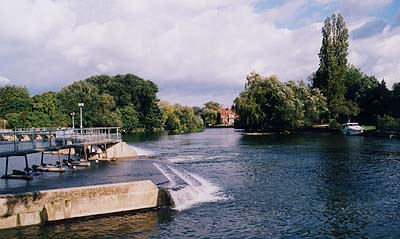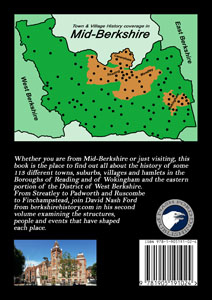 |
 |
||||||||
|
|
The Roman road from Silchester to Dorchester-on-Thames runs through Pangbourne parish somewhere and signs of Roman occupation have been uncovered on Shooters' Hill. Pangbourne means Paega's People's Stream, showing that it was the home of an early Anglo-Saxon chieftain of that name and his retinue. The place is first recorded in a grant of land there to Bertwulf, the King of Mercia (the Midlands) in AD 844. The monarch is therefore prominently depicted on the village sign near the village hall. Pangbourne manor was given to Reading Abbey by King Henry I and the abbots often used the manor house of Bere Court, below Bowden Green, as a summer get-away. The last of their line, Hugh Cook Faringdon, was hiding in the underground tunnels there when he was captured and sent to Reading for execution in 1539. Bere Court later came into the hands of Sir John Davis, who had made his fortune capturing Cadiz with the Earl of Essex in 1596. His large effigial monument can be seen in the parish church. This also houses the largest array of hatchments (heraldic funerary boards) in the county, all to the Breedon family who were subsequent lords of the manor. The first of this family to live in Pangbourne was John Breedon, a London alderman who bought the manor in 1671. His brother was the Governor of Nova Scotia. Not far from Bere Court is Pangbourne College, founded in 1917 by Sir Thomas Lane Devitt, on the site of an old towered folly connected with Bere Court. He wished to train boys for the Royal and Merchant Navies. Pangbourne has always prospered as a centre of communications, with major roads, the river, a ferry and, from 1893, a bridge named after the village of Whitchurch on the Oxfordshire bank of the Thames. The Swan Inn, by the weir, is immortalized in Jerome K Jerome's 'Three Men in a Boat' and Kenneth Grahame, the author of 'The Wind in the Willows', retired to Church Cottage in 1924 and died there eight years later. His funeral was conducted in the adjoining church, though he is buried in Oxford. The old village lock-up can be easily seen from the road in Grahame's garden. He wrote 'Wind in the Willows' in Cookham Dean, but the rolling River Thames at Pangbourne is said to have been the inspiration for many of EH Shepard's beautiful illustrations. Further upriver from the Swan, the steep sides of Shooters' Hill rise up from the road named after it. The hill is supposed to have been named in the 17th century after an artillery station positioned there during the Civil War to guard the Thames crossing. Cannon balls were dug up nearby when the Great Western Railway was laid. Read more history of Pangbourne and other nearby settlements, like Upper Basildon, in David Nash Ford's book, 'Mid-Berkshire Town and Village Histories'. Click to Order direct from the Author.
|
||||||||
| © Nash Ford Publishing 2004; Revised 2020. All Rights Reserved. | |||||||||



 Pangbourne
Pangbourne
